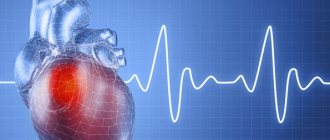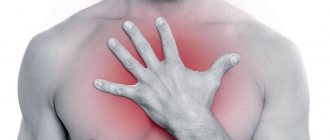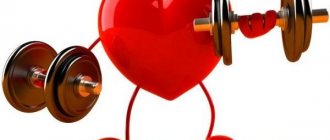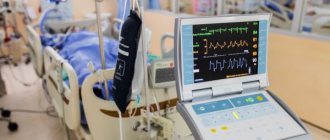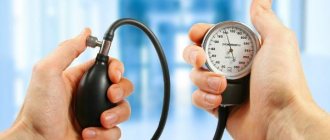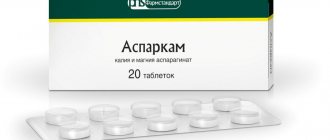High blood pressure and the cause of depression
Depression is caused by stress, lack of sleep and constant nervous situations. It is often impossible to determine the original pathology that caused another disease: whether hypertension has become a symptom of neurosis or vice versa. Anxiety caused by excessive emotional stress can lead to increased blood pressure. When pressure increases and blood vessels malfunction, nervous system disorders occur. Such cases confirm that hypertension is often a symptom of nervous disorders.
Causes of hypertension
This disease occurs due to the influence of the following factors:
- constant stress and nervous situations;
- frequent problems and conflicts in interpersonal relationships;
- strong intellectual stress and high ability to work;
- infections affecting the structure of the brain, complications after influenza, inflammation, etc.;
- head injuries;
- hereditary genetic factors;
- damage to the central nervous system.
All of the above factors, alone or in combination, cause disruption of the basic functions of the nervous system. Disruptions occur when the body is unable to perform its protective functions. Neurosis causes tension and exhaustion of the human psyche. Based on this, the formation of vegetative-vascular dystonia (VSD) occurs.
If blood pressure has risen due to stress or nervous tension, then this is a clear sign of neurosis.
Causes and mechanism of development
The causes of the development of neurosis are:
- Constant or one-time severe stress in the form of the loss of a loved one, problems in your personal life or at work;
- Physical and mental stress, workaholism;
- Infectious damage to the brain (flu, inflammation due to the development of bacterial microflora);
- Hereditary predisposition to the development of diseases of the central nervous system;
- Pregnancy, lack of moral preparation for childbirth and child care;
- Traumatic brain injuries: fractures, bruises, wounds;
Under the influence of one or several factors, the functioning of higher nervous activity occurs. A breakdown is associated with a discrepancy between the strength of the external stimulus and the body’s defenses. Overexertion negatively affects the functioning of the autonomic nervous system, as well as the human psyche, and vegetative-vascular dystonia is formed.
Types of disease
Modern psychotherapy divides neuroses into three groups:
- Neurasthenia. Manifests itself in chronic fatigue and decreased ability to work.
- Hysteria. Main symptom: hysterical breakdowns and seizures. Possible disturbance of speech and coordination of movements. The person becomes unjustifiably whiny. His psyche is upset, inappropriate behavior is observed.
- Obsessive-compulsive neurosis. Characterized by increased excitability and obsession with ideas. Constant worries and fears.
- In some sources you can find a separate type - autonomic system dysfunction syndrome.
His symptoms are the same as those of neurosis:
- frequent pain in the head and cervical vertebrae;
- pain and discomfort in the chest area;
- lack of air when breathing;
- stomach ache.
During the examination, it is often difficult to identify specific diseases of these organs. Due to an anxious state, the functioning of the cardiovascular system and heart is disrupted, the pulse quickens, and vascular tone decreases. All this gives rise to tachycardia and increased blood pressure. This is the initial stage of arterial hypertension.
Persistent high blood pressure, if undiagnosed and untreated, affects major organs.
Definition and diagnosis
At the first symptoms, an examination by a psychotherapist or psychiatrist is necessary. Required inspection criteria:
- general thorough survey and examination;
- assessment of speech quality and behavioral activity;
- determination of tendon reflexes.
Basic manipulation examinations are carried out:
- cardiogram and cardiac ultrasound;
- blood pressure measurement;
- X-ray or tomography of the chest.
Basic blood and urine parameters do not change with neurological changes.
If neurosis is a consequence of infection, symptoms of inflammatory processes in the human body are observed. Neurasthenia and increased blood pressure require examination and prescription of a treatment regimen by two specialists: a psychotherapist and a neurologist.
The danger of hypertension
If you have low or high blood pressure, then during nervous periods the functioning of the heart and vascular system may be disrupted. Doctors call pressure changes during neurosis a “silent killer.” Increased blood pressure, as a consequence of neurosis and disruption of brain function, has irreversible consequences, including the death of the patient. The following are susceptible to hypertensive neurosis:
- individuals who are often upset or anxious for no reason;
- pregnant and postpartum women;
- patients suffering from a vegetative form of neurosis;
- mental and physical overload;
- people over 50 years old.
We cannot ignore the fact that high blood pressure during neurosis can lead to an undiagnosed pre-stroke condition in a person or even a stroke. Human emotions, conscious and unconscious, often have physical effects such as increased heart rate and increased blood pressure. An explosion of emotions, anxiety or anger changes the flow of blood circulation, and this is severe stress for the body, which can become chronic.
Some neurasthenics with hypertension can only be treated in a psychiatrist's office. At the initial stages, he diagnoses and treats the nervous system, and after this the pressure returns to normal. If the patient consults a doctor late and the disease develops into a chronic disease, then treatment is structured so that it is possible to maintain the patient’s condition and teach him to cope with the disease.
Increased intracranial pressure in neurosis with a more severe form requires constant monitoring and medication to lower it.
High blood pressure as a result of blues
The stress level of patients with high blood pressure is approximately 55-70 percent.
Particularly significant signs of hypertension:
- voltage;
- nutritional allergy;
- bad habits;
- excessive use of sodium chloride;
- overweight;
- poor bodily dynamism.
All these reasons primarily contribute to the occurrence of heart disease (essential hypertension). In addition, high blood pressure can cause a number of other diseases, namely: kidney disease, endocrine diseases, narrowing of the aorta, and the like.
Tension, namely long-term tension, is the most important factor in the appearance of high blood pressure. Hypertension is typical precisely for those people who have a tendency to neurotic disorder.
Quite often, prostration that forms under pressure is reflected in a large number of anxious complaints, monotony and obsessiveness of actions. As a rule, such people do not like everything, take themselves for very sick, complain strongly even about minor reasons and cannot live without constant care.
Treatment of hypertension
High blood pressure due to neurosis can only be treated if the original disease is eliminated. If the cause is not eliminated, treatment will be ineffective. Patients who want to eliminate neurosis need to establish a regimen and reduce mental, moral and physical stress. They are the first causes of the disease. You need to fall asleep and wake up at the same time. Walking in the fresh air before bed is advisable. A balanced and regular diet is a must. Sports activities are possible, but in a lighter version. Eliminate all rarefaction factors. You can change your usual environment, even changing your place of residence.
In case of serious violations, a simple change of environment and regime will not be able to eradicate the disease. In such cases, medication treatment is mandatory. In order to eliminate anxiety and fear, sedatives and tranquilizers are prescribed: Grandaxin, Mexidol, Atarax, etc. The drugs activate the body’s properties and help cope with vegetative problems. The body, under their influence, normalizes nervous conditions and tones the vascular system.
Treatment of pressure surges with neurasthenia
If a patient is diagnosed with hypertension due to neurosis, he needs the help of a psychotherapist. The patient is not always able to independently understand emotions and discover the causes of disturbances.
Patients with hypertension are advised to exclude stressful situations and limit mental and physical activity. Medications include psychostimulants, antidepressants, tranquilizers, adaptogens, and anti-anxiety drugs.
The doctor selects the drug, dose and determines the duration of treatment, taking into account the patient’s age, existing diseases and complications.
Patients with symptomatic hypertension are prescribed ACE inhibitors, beta blockers, and diuretics. For patients with hypertension, a diet high in carbohydrates and proteins is recommended. Salted, fried, fatty, smoked, canned, and sour foods are excluded from the diet.
During the recovery period, physiotherapeutic treatment is used: electrophoresis, darsonval, baths with essential oils. The disease with complex treatment lasts from 2 to 3 months.
If a patient has low blood pressure, neurosis in this case is complemented by chronic fatigue. Typical symptoms:
- fast fatiguability;
- deterioration of attention and memory;
- impaired concentration;
- weakness.
When blood pressure drops, hypotension occurs. Some patients experience hypotension: as soon as a person is in an upright position, the pressure drops sharply.
Medicines
Drug therapy to eliminate surges in vegetative-vascular dystonia includes several groups of drugs:
- Venotonics are medications that increase the tone of large and small blood vessels. Most popular:
- Herbal preparations with extracts of ginkgo biloba and chestnut: Aescusan, Tanakan, Ginkofar.
- Chemical-based products: Phlebodia, Detralex, Normoven.
- Vascular drugs: Phezam, Betaserc, Vinpocetine.
- Homeopathic medicines: Tonginal, Vertigohel.
- Sedatives (natural, chemical): Novopassit, Sedavit, Afobazol and others.
- Medicines that improve the supply of oxygen to the myocardium: Riboxin, Mildronate.
- Vitamin complexes: Vitrum, Undevit, Centrum. It is very important to compensate for the lack of B vitamins, which normalize the conductivity of nerve cells and restore their function. For this you can use Neurovitan, Neurobeks.
- Antidepressants - the dose and name of the drug are prescribed exclusively by the doctor on an individual basis.
- High blood pressure medications:
- With an effect that develops after 15-20 minutes, use is possible only in emergency situations: Capoten, Captopres, Nifedipine, Cartopril.
- Taken one-time or in courses: Bisoprolol, Lozap, Enalapril.
Important! Injections help achieve the desired therapeutic effect faster than medications taken orally.
Blood pressure - what to expect with neurosis?
Surely, everyone has more than once heard from some excited acquaintance the phrase “my blood pressure jumped due to nervousness.” I wonder if blood pressure can drop in stressful situations? What kind of hesitations should a person with the most popular modern diagnosis – neurosis – expect? Pressure during neuroses - what to expect?
The term “neurosis” covers not one specific disease, but a whole complex of protracted neurotic disorders. Conventionally, these disorders can be divided into the following groups:
- associated with asthenic manifestations (chronic fatigue),
- with obsessive symptoms,
- with hysterical manifestations,
- with vegetative manifestations (vegetative-vascular dystonia).
Neurosis has typical mental and physical symptoms. The most striking mental manifestations of neurosis are:
- emotional instability,
- anxiety,
- irritability,
- obsession.
Main physical symptoms:
- heart pain and migraines,
- panic attacks,
- appetite and sleep disturbances,
- arrhythmia, blood pressure fluctuations.
With any neurotic disorder, almost all of the listed symptoms are found in the context of their group.
Threat from neurosis. The cardiovascular system is at risk
The manifestation of neurosis affects all systems of the body. However, the most dangerous effect remains on the human cardiovascular system. Family doctors and psychiatrists should carefully monitor the heart health of patients with neurosis. These people are four times more likely to develop high blood pressure within one year. And hypertension is a leading risk factor for stroke and heart disease.
Any human emotion, even unconscious, can manifest itself through increased heart rate. During sexual arousal or strong excitement, with anxiety or anger, blood circulation in the body functionally changes. This process is natural and makes the life of a healthy person only brighter.
However, any emotion, negative or positive, is essentially stress for the human body. Stress can be resolved in two ways:
1) the body is completely rehabilitated without consequences after the shock it has experienced;
2) stress drags on over time, or is so strong that it develops into a chronic stressful state.
Since a person with neurotic disorders already has an unstable, hypersensitive, as if irritated, emotional state, his body cannot cope with stress, reactions turn pathological - persistent tachycardia and hypertension occur.
In some neurotic people with hypertension, it is possible to eliminate it with the help of psychotherapy. However, it should be recognized that quite often it is too late to resort to using it. Disturbances can become persistent - then psychotherapy can only be effective in helping the patient live and cope with an existing illness.
Low blood pressure in the context of neurotic disorders is most typical for people with asthenic syndrome, that is, those suffering from chronic fatigue.
Symptoms of this syndrome are increased exhaustion, fatigue, weakness, a person’s inability to concentrate and be under physical or mental stress for a long time, deterioration of memory and attention. That is, the entire body is in a slow and weakened state. The same applies to blood pressure: it drops, does not rise for a long time - a person develops hypotension.
The beneficial development of hypotension can be affected by sudden changes in atmospheric pressure, heavy food intake, or prolonged constant standing in an upright position.
Some patients also experience postural hypotension. The pressure drops sharply when the body takes a vertical position.
What if you don't act?
If you don’t try to find a solution and continue to ignore your condition, you can significantly reduce the quality of your life. Anxiety and irritability affect both relationships with others and with oneself. It can manifest itself in different areas of life:
- Emotional. A person is accompanied by anxious thoughts and fears, anticipation of upcoming or intense thinking about past life events.
- Physical. In this area, anxiety manifests itself as muscle tension, stiffness, a feeling of tightness in the chest, and the inability to relax.
Painful sensations in the heart area can be perceived by a neurotic as heart defects
- Motor. An anxious person cannot sit in one place; he constantly makes some movements, thereby distracting himself from his condition.
Living against a background of constant anxiety is not easy; as it increases, the desire to take an active part in life, attend events, and meet new people disappears. Over time, a person risks becoming a tired and apathetic version of himself.
In addition to anxiety, various disorders of the autonomic nervous system manifest themselves, which also do not bring positive emotions.
It is not only possible, but also necessary to defeat neurosis and VSD. An integrated approach to this issue will help you start enjoying every new day again.
Neurosis: how to get rid of it?
Neurosis... Everyone has heard this word, but few people know exactly what kind of disease it is, how it manifests itself, and where it is treated. Constant fatigue, fear, insomnia, melancholy, low mood, just an obsessive thought or not wanting to do anything. Every person sooner or later experiences similar symptoms. Usually they say that this is a neurosis.
When you are plagued by irritability, decreased performance, and conflicts, this is also a neurosis. It happens that when you go to a therapist about pain in your heart or stomach, you leave the office with the same diagnosis - neurosis. There are so many different manifestations, but only one diagnosis. We often say “I have a neurosis” or “I’m nervous.” And in different situations we put different meanings into the concept of “neurosis”. The uniqueness of neurotic disorders is that their external manifestations can resemble the signs of almost any disease.
So what kind of disease is this – neurosis? What are its reasons? What are the signs of neurosis? And how to get rid of it?
Neurosis is a neuropsychic disorder that is caused by traumatic circumstances associated with the disruption of particularly significant human life relationships. The main sign of neurosis is the presence of an unconscious personal conflict within. External manifestations of neurosis may resemble signs of various diseases, while neurosis is not accompanied by damage to the internal organs of a person. Neurosis can last for many years, but it is always a reversible disease. Neurosis is also not a mental illness. In medical practice, neurosis is considered a borderline condition and never leads to the development of mental disorders. It is rather a reversible reaction of the individual to some kind of traumatic situation.
The obvious signs of neurosis are very varied. It is precisely these manifestations that we encounter in everyday life. Neuroses are often accompanied by “asthenia” or exhaustion - this is increased fatigue, lack of strength, a state of weakness, especially physical. Decreased ability to work, deterioration of attention, memory - this is also asthenia. Mechanical reading without mastering the content of what is read is typical. All this is accompanied by increased excitability, irritability, and mood instability. In addition, impatience and poor tolerance of waiting are characteristic.
One of the constant manifestations is increased sensitivity to loud sounds, noise, and bright light. Frequent headaches are possible. Sleep disturbance, with difficulty falling asleep, waking up in the middle of the night and lack of alertness after sleep. Other symptoms include intrusive thoughts, actions or memories, doubts, and ruminations. Uncertainty about the correctness and completeness of various actions with the desire to double-check them (whether the gas or lights are turned off), obsessive counting, obsessive fear of dangerous or ridiculous actions (cutting yourself with sharp objects, jumping from a balcony), obsessive movements and actions (multiple hand washing, repeated medical examinations). Neurotic phobias are obsessive experiences of fear with specific content and the presence of criticism of one’s condition.
One of the manifestations or variants of neurosis is hypochondria - an inadequate attitude towards one’s health. Hypochondria is a disease that is expressed by excessive fear for one’s health, focusing on ideas related to one’s own health, and a tendency to attribute to oneself illnesses that do not exist. With neurosis, neurotic depression can also develop. The reason is a real traumatic situation. The main sign is a “bad” mood. Depressed mood is combined with emotional instability, asthenia, mild anxiety, loss of appetite and insomnia. Patients usually understand the connection between their condition and traumatic moments, try to fight the disease, and strive to change the situation that led to the development of depression.
Autonomic disorders are very common in neurosis. They are called differently: vegetative-vascular dystonia or VSD, neurocirculatory dystonia, vegetosis, angioneurosis, cardiac neurosis. Autonomic disorders in neuroses can be of two types. With the first, there may be the following symptoms: increased heart rate, increased blood pressure, pallor and dry skin, decreased salivation and dry mouth, “goose bumps”, a tendency to increase body temperature, chilliness of the extremities, etc. For VSD of the second type, a slowdown is characteristic pulse, decreased blood pressure, increased salivation, increased intestinal motility, redness of the skin. It should be noted that in their pure form, autonomic disorders of the first or second type are quite rare. As a rule, autonomic disorders are mixed.
Why do blood pressure changes occur during VSD?
Pressure surges are the main sign of pathology. Making a diagnosis requires identifying the cause that led to the disorder. The following factors can serve as provocateurs:
- Genetic predisposition,
- Oxygen starvation during intrauterine development,
- Mental disorders,
- Diseases of the endocrine gland (obesity, diabetes, hyperthyroidism and others),
- Disturbances at the hormonal level (pregnancy, menopause, adolescence),
- Mental characteristics (increased emotionality),
- Serious concussions
- Allergic processes,
- General poisoning of the body,
- Severe stressful situation
- Bad habits (abuse of alcohol and tobacco products),
- Nervousness,
- Meteor dependence.
During a hypotonic or hypertensive attack, the patient notes a significant deterioration in well-being. During an exacerbation of VSD, a number of symptoms appear:
- A sharp increase or decrease in pressure.
- Abnormal heart rate.
- Increased work of sweat glands.
- Feeling of lack of air, shortness of breath.
- Dizziness.
- Nausea.
- Intestinal spasm.
- Numbness of arms, legs.
- Coldness of the extremities.
- Increased anxiety.
- Drowsiness, fatigue.
Classification and symptoms
Domestic experts divide neurosis into three large groups:
- Neurasthenia – chronic fatigue, decreased performance, negative view of the world around us;
- Hysteria is a disorder of the psyche, speech and behavior of a person, increased tearfulness that accompanies hysterical attacks;
- Obsessive-compulsive neurosis is increased excitability of the nervous system, an increase in the number of fears, phobias, and obsessions that interfere with a peaceful life.
Some sources identify autonomic dysfunction syndrome as a separate type - disruption of the autonomic nervous system directly affects the patient’s health; he experiences subjective sensations: headaches, discomfort in the chest, in the abdominal area, a feeling of lack of air, and according to the results of the study, not determined by concomitant organ diseases. The patient is concerned about his own well-being, which further depletes the nervous tissue and contributes to its destruction. Over time, the heart rhythm and vascular tone change, neurosis is accompanied by tachycardia and arterial hypertension.
A complication of a persistent increase in blood pressure in the absence of adequate therapy is damage to the kidneys, cerebral vessels and fundus of the eye, changes in the size of the myocardium, and the development of chronic heart failure.
Mixed type
The mixed type is considered the most serious and dangerous; the pressure can change several times a day. In this case, patients observe the following symptoms:
- Pain syndrome in the chest area.
- Abnormal heartbeat (bradycardia or tachycardia).
- Visual and speech impairment.
Prescribing the necessary therapy in such cases is not an easy task. Often, psychotropic medications are taken, and in strictly prescribed dosages by the doctor.
Interesting! Most people suffering from VSD are sensitive to changes in atmospheric pressure. When the barometer readings are low, blood pressure rises, and when the barometer readings are high, it drops.
The patient's blood pressure changes in opposite directions several times a day. It is difficult to remove symptoms. To normalize the condition, it is recommended to use sedatives that have a calming effect.
Symptoms of pathology
More often, deviations in systolic (upper) and diastolic (lower) blood pressure are accompanied by additional signs that complement the deteriorated condition of the body. Symptoms of blood pressure failure:
- fibrillation of the heart muscle;
- untimely depolarization and contraction of the heart;
- inflammatory process of the connective tissue membrane of the heart;
- angina pectoris;
- thrombosis and thrombophlebitis;
- increase in heart rate;
- headache;
- short-term or long-term visual impairment;
- powerlessness and weakness;
- apathy;
- drowsiness.
VSD – hypotonic type
The main manifestation of this type is low pressure, with systolic pressure dropping below 120 mm. rt. Art., diastolic – below 80 mm. rt. Art., which is due to the influence of the parasympathetic department.
The pathological condition can provoke another reaction from the cardiovascular system, which typically lowers pressure against the background of dilation of blood vessels.
A jump with low pressure is manifested by a number of signs:
- Feeling of a “heavy head”
- General weakness, apathy,
- Head pain (usually in the frontal area),
- Weakness, sudden drowsiness,
- Nausea, vomiting,
- Chest discomfort or pain
- Dizziness,
- Feeling of a lump in the throat
- Memory impairment
- Pre-fainting, fainting states.
The provocateurs of the jump are most often regular stress, severe psychological trauma, mental or physical overstrain.
Treatment of pressure surges with VSD
A “decisive” patient tries to normalize unstable blood pressure due to VSD with medications.
If blood pressure is high, take one tablet; if blood pressure is low, take another. Fortunately, the possibilities of the pharmaceutical industry are now inexhaustible. But a change in weather in the body of a person with VSD can be observed not once a week, but several times during the day. Medicine has not yet come up with a universal pill - except that sedatives in this case can somewhat reduce the severity of the expression. In this case, a competent doctor will prescribe antidepressants or nootropics instead of diuretics and beta blockers, for example. An experienced doctor will recommend a good psychotherapist.
Another method of treatment is with herbs. On forums they often recommend motherwort or hawthorn to reduce blood pressure, ginseng or eleutherococcus to increase it. And the patient tries to keep up with the surges in his blood pressure, brewing either hawthorn, or ginseng, or mint with lemon balm. Is it possible to overcome the disease by monitoring and observing it, adapting to its ebbs and flows? Every person who has struggled with the disorder for many years will answer in the negative: symptomatic treatment in any form does not work.
The most practical advice in case of chaotic behavior of blood pressure in a vegetative disorder is to normalize the regime, go in for sports, love life, use a tonometer to correct the same sports activities. And a psychologist or psychotherapist competent in the treatment of neuroses can help in getting rid of all fears, anxieties, and curing neurosis through proper (non-drug) treatment. Will pressure surges disappear after psychotherapeutic treatment? Yes, like any other symptom of VSD.
Treatment and recommendations
The most effective treatment for pressure with VSD is a systematic and targeted fight against the disease under the supervision of specialists. Treatment is carried out by a neurologist, psychotherapist, psychiatrist, physiotherapist, massage therapist.
Do not be afraid to seek help from a psychiatrist - this is the main doctor who helps in the fight against depression and panic attacks.
The leading role in normalizing the patient’s condition belongs to self-organization:
- maintain a daily routine with the correct alternation of periods of activity and rest;
- sleep at least 8 hours a day;
- eliminate exposure to stress and other negative influences;
- do not take alcohol and tobacco;
- adhere to a healthy lifestyle;
- engage in calm sports - swimming, yoga, therapeutic exercises;
- moderately temper the body - use a contrast shower;
- Take massage courses - restorative, cervical-collar area.
Often patients with VSD have various kinds of psychological difficulties:
- reduced ability to adapt to changed circumstances;
- insufficient self-control, motivation;
- high level of anxiety;
- tendency to frequent mood swings, etc.
Psychotherapeutic treatment of hypertension
Before starting treatment for hypertension, the patient must understand the cause of its occurrence and the presence of neurosis. A person is prescribed psychotherapy, in which specialists help him understand his feelings and emotions, find the hidden causes of the disorder, abandon his usual beliefs and admit his mistakes.
The patient is advised to find a hobby, communicate more with people and change their lifestyle. Therapy takes place in several stages, each of which focuses on specific problems. First, a person must understand himself, his family, those around him, his work and health. After this, the specialist analyzes each component of the patient’s life and determines which of them causes negative emotions and provokes hypertension. At the final stage, introspection and rethinking of the point of view occurs.
Lifestyle change
Treatment of hypertension resulting from neurosis involves modification of the patient’s lifestyle, which helps:
- reduce weight;
- increase physical activity;
- reduce the amount of alcohol consumed;
- reduce the amount of salt (sodium chloride) in food;
- manage stress, etc.
What does “living water” mean?
Friends, I hope that you can get everything right! Listen to how the “living water” gurgles in your body - blood! Disconnect from the outside world for a minute and you can feel your pulse! But this life-saving liquid brings life to all parts of your body! Be careful with your life-giving structure, which is the circulatory system!
We recommend watching:
We recommend reading:
Are they conscripted into the army with VSD?
Previous article
Characteristic causes of VSD
Next article
Treatment options
The healing process will require the elimination of psychological factors in the formation of pathology.
A psychologist will help a person become emotionally balanced.
The patient can independently resolve everyday difficulties, as well as eliminate mental and physical activity for the duration of treatment. If, due to psychological trauma, he is unable to cope, the help of a psychologist is recommended, and sometimes treatment in inpatient psychiatric clinics is required. For treatment, medications are used, the dosage and duration of which is approved by the doctor. Important healing drugs are:
- psychostimulants;
- psychotropic sedatives (tranquilizers);
- antidepressants;
- anti-anxiety drugs;
- adaptogens;
- beta blockers;
- BMCC (slow calcium channel blockers);
- angiotensin-converting enzyme inhibitors;
- diuretics;
- vitamins (B, B9, B12);
- retinol;
- tocopherol;
- ascorbic acid.
Sources
- https://psyhoday.ru/nevroz/gipertoniya-kak-simptom-psihoterapiya.html
- https://eustress.ru/nevroz/davlenie-pri-nevroze
- https://notoffended.ru/polezno/davlenie-pri-nevroze/
- https://NashiNervy.ru/tsentralnaya-nervnaya-sistema/povyshenie-davleniya-i-pulsa-pri-nevroze.html
- https://VseDavlenie.ru/problemy/bolezni/vysokoe-davlenie-pri-nevroze.html
- https://vsdhelp.com/info/ckachki-davleniya-pri-vsd.html
- https://urazuma.ru/nevroz/gipertoniya-kak-simptom-psihoterapiya.html
